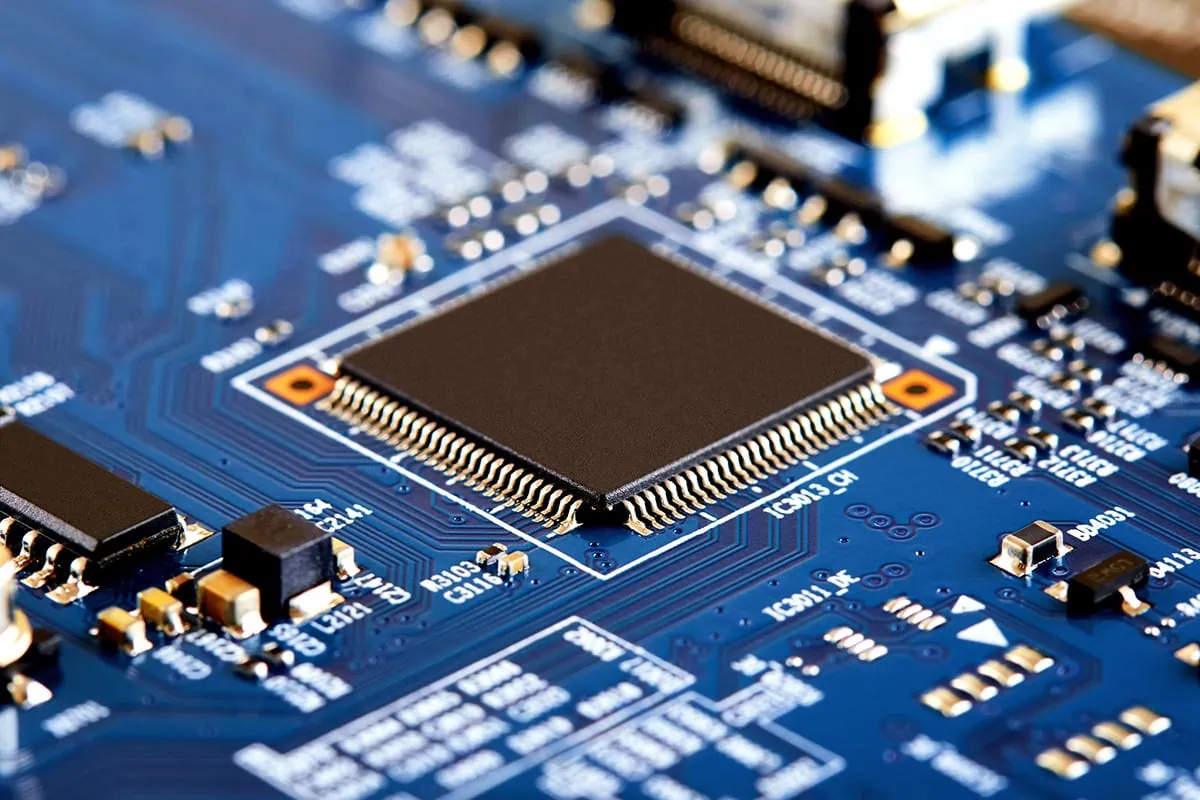The technology sector has been the stock market’s premier source of returns this century. For many reasons, Wall Street believes that will continue to be the case for the foreseeable future, and those who agree might be wise to consider some of the market’s best tech stock ETFs.
Look around your home, look around your workplace, look around at billboards on your way into work, and look at the ads you see when you’re kicking back and watching TV. No matter where you look, you’re bound to see growing signs of technology creep into every aspect of your life. We’ve all been carrying smartphones for years—but now, we’re in the age of industrial companies hocking smart fridges, retailers using robotics and AI to optimize their supply chains, and utility companies leaning on the “smart grid” to deliver electricity more reliably.
All of that means more money flowing into the technology sector, whether it’s the companies delivering these wondrous solutions, or the companies that build the hardware necessary to run those solutions. And while you could make concentrated bets on one or two stocks, technology exchange-traded funds (ETFs) allow you to leverage the sector’s growth without knowing exactly which companies will end up on top of the heap.
Read on as I introduce you to some of the market’s best tech ETFs.
Disclaimer: This article does not constitute individualized investment advice. These securities appear for your consideration and not as personalized investment recommendations. Act at your own discretion.
Editor’s Note: Tabular data presented in this article is up-to-date as of Sept. 2, 2025.
Table of Contents
Why Invest in the Technology Sector?

Our stock market’s history shows that various sectors fall in and out of prominence over time—energy, industrials, and others have been kings of the economy, but have eventually ceded ground.
As I mentioned earlier, technology stocks are currently king of the hill. They’ve been the market’s greatest driver of growth over the past quarter-century or so thanks to the internet, e-commerce, cloud computing, artificial intelligence, and more. These innovations have made technology far more than just the devices in our hands and on our desks—they’ve turned technology into the backbone of the American economy.
While sectors come and sectors go, at least for now, no one sees technology’s superiority waning anytime soon.
In a recent analysis, Russ Koesterich, Managing Director and Portfolio Manager for BlackRock’s Global Allocation franchise, notes that global 12-month estimates for earnings and sales growth for technology stocks aren’t just greater than any other sector—they dwarf all other expectations.
And despite tech’s red-hot returns for so many years, the sector isn’t overcooked—at least not yet. “From a valuation standpoint, while tech is not cheap, valuations are within range,” he writes.
While there’s a lot to be said about investing in individual technology stocks, tech stock ETFs have their own appeal: namely, diversification. While heaping a large portion of your assets into one or two equities has the potential to disrupt your portfolio should one of those equities collapse, spreading your risk around dozens of stocks inside an ETF ensures that one stock’s failure won’t crack your nest egg.
The Best Tech Stock ETFs to Buy

What exactly constitutes a great technology-sector fund is going to vary from one person to the next. But we can narrow a very large universe of tech ETFs down to a batch that will appeal to most buy-and-hold investors by applying a few filters. Thus, all of the funds on this list meet the following criteria:
— Morningstar Medalist rating: Morningstar has two ratings systems—the Star ratings and the Medalist ratings. The latter are a forward-looking analytical view of a fund. Per Morningstar: “For actively managed funds, the top three ratings of Gold, Silver, and Bronze all indicate that our analysts expect the rated investment vehicle to produce positive alpha relative to its Morningstar Category index over the long term, meaning a period of at least five years. For passive strategies, the same ratings indicate that we expect the fund to deliver alpha relative to its Morningstar Category index that is above the lesser of the category median or zero over the long term.” We’re starting with any ETF that earns at least a Morningstar Medalist rating of Bronze.
— Low fees: Every basis point in expenses that a fund charges is money that’s coming out of performance. While we obviously want fund companies to be compensated for making a good product, we want to own funds that aren’t taking an onerous cut of the returns. All funds here are in the second-lowest or lowest quartile of category funds by expenses—as you’ll see, more tactical strategies will tend to be more expensive than broader sector strategies.
— Meaningful assets under management: To be included on this list, a tech ETF must have at least $500 million in assets under management (AUM). While I personally love brand-spanking-new funds, established ETFs with high assets are much less likely to close (the number of ETF closures in a given year is typically in the triple digits!), and thus better buys for people who are looking out several years. Higher assets under management also frequently coincide with lower expenses (great for investors generally) and tighter bid/ask spreads (great for swing and day traders).
Out of the more digestible resulting list, I’ve selected a variety of tech stock ETFs that cover a variety of investor wants and needs, from core sector coverage to smart-beta twists to specific technology industries.
1. Vanguard Information Technology ETF

— Assets under management: $98.7 billion*
— Dividend yield: 0.5%
— Expense ratio: 0.09%, or 90¢ per year on every $1,000 invested
— Morningstar Medalist rating: Bronze
The Vanguard Information Technology ETF (VGT) is one of the cheapest and most straightforward ways to invest in tech stocks.
The VGT tracks an index that includes large-, mid- and small-cap companies within the information technology sector. The fund’s assets are allocated to each stock based on the market capitalization of the company’s “float,” which is just the company’s shares available for public trading. Said more simply: The bigger the company, the greater its weight.
On the one hand, you’re getting exposure to nearly 320 companies (most of them growth stocks) spanning a variety of technology-sector industries, including semiconductors; systems software; application software; hardware, storage, and peripherals; electronic components; and more.
On the other hand, VGT (and funds with similar weighting systems) are somewhat lopsided. For instance, trillion-dollar behemoths Nvidia (NVDA), Microsoft (MSFT), and Apple (AAPL) account for 18%, 15%, and 13% of the fund’s assets, respectively. For a fund that holds some 320 companies at present, a lot of the fund’s performance (45%!) is reliant on just three names. This weighting system also skews the exposure to different market-cap sizes—nearly 80% of assets sit in large caps, while mid- and small-cap stocks split the remaining assets.
Related: The 10 Best-Rated Dividend Aristocrats Right Now
If you really want to lean into the benefits of diversification with much more similar exposure across all stocks, you could consider a fund that equally weights its components, such as the Invesco S&P 500 Equal Weight Technology ETF (RSPT), which I’ve previously called one of the best ETFs for beginners.
But Vanguard Information Technology ETF is the market’s largest tech stock ETF by assets, and it’s not for nothing. In addition to having extremely low annual expenses of just 0.09%, its straightforward methodology has largely worked out for it. Indeed, VGT has beaten the pants off RSPT over every significant time frame.
Part of the reason? When its larger components struggle (and it’s not because of, say, a bear market), it may be because smaller components in the fund are eating their lunch. So as long as all of VGT’s holdings have a larger lunch to share, the ETF should benefit.
* Vanguard fund assets are spread across multiple share classes, including mutual funds and ETFs alike. Assets listed for each fund in this story are for the ETF share class only.
Do you want to get serious about saving and planning for retirement? Sign up for Retire With Riley, Young and the Invested’s free retirement planning newsletter.
2. Invesco PHLX Semiconductor ETF

— Assets under management: $13.4 billion
— Dividend yield: 0.7%
— Expense ratio: 0.19%, or $3.40 per year on every $1,000 invested
— Morningstar Medalist rating: Bronze
During the California Gold Rush of the 1840s and 1850s, news of found gold in what in just a couple of years would become the 31st state (indeed, the Golden State) triggered an influx of prospectors trying to earn their fortune. However, while many prospectors came away empty-handed, merchants selling mining tools—including picks and shovels—did quite well for themselves. That’s because their success didn’t depend on getting lucky and finding gold; it just depended on meeting demand.
What does that have to do with technology?
Semiconductors could very well be considered among the “picks and shovels” of the technology sector. If you’re a technology provider or adding technological capabilities to any part of your business, your success is far from guaranteed—for every cloud or AI innovation, there’s a 3D TV or an iSmell—but it’s a pretty sure bet that whatever you’re doing, you’re going to need semiconductors to do it.
Related: The 7 Best Gold ETFs You Can Buy
That’s not to say that all semiconductor companies are built the same—various “chip” stocks will specialize in different product types. But the thinking goes that instead of trying to strike it rich by picking the right emerging technology, you can just own the semiconductor companies that are supplying the technological gold rush.
The Invesco PHLX Semiconductor ETF (SOXQ) tracks a modified market cap-weighted index of semiconductor companies that are U.S.-listed, but not necessarily U.S.-domiciled. In other words, this tight portfolio of 30 chip stocks covers all the big names not just here at home but around the world—Nvidia, Broadcom (AVGO), Taiwan Semiconductor Manufacturing Co. (TSM), Advanced Micro Devices (AMD), and more.
The weightings aren’t as lopsided as they are in VGT, but you still have some big pull from the likes of Nvidia (13% weight) and Broadcom (10%). Still, like with VGT, any weakness in a few of SOXQ’s components could be because other SOXQ holdings are coming into favor.
This simple positioning in tech’s “picks and shovels” makes this iShares’ semiconductor fund an ideal way to bet on trends such as artificial intelligence (AI), the cloud, and more.
Related: The Best ETFs You Can Buy
3. Global X Artificial Intelligence & Technology ETF

— Assets under management: $4.6 billion
— Dividend yield: 0.1%
— Expense ratio: 0.68%, or $6.80 per year on every $1,000 invested
— Morningstar Medalist rating: Bronze
The Global X Artificial Intelligence & Technology ETF (AIQ) is the largest pure-play AI ETF on the market.
“AI spans multiple segments, and its most innovative companies include both household names and newcomers from around the world,” Global X says. “AIQ invests accordingly, without regard for sector or geography.”
That’s another way of saying that Global X believes AI profits can be made not just from the companies that produce the technology—but also the companies willing to adopt it. To reap these profits, AIQ invests in an index that breaks companies down into two categories, which themselves are broken down into a total of four easier-to-understand subcategories:
1. AI applied to products and services: These companies have developed internal AI capabilities and are directly applying AI tech into their products and services. This can include image and/or language processing, threat detection, recommendation generation, and more.
2. AI-as-a-service for Big Data applications: Companies that provide AI capabilities to their customers as a service. They usually offer cloud-based platforms that let their customers apply AI techniques to big data without having to build their own capabilities.
3. AI hardware providers: Companies that produce semiconductors, memory storage and other hardware needed for AI applications.
4. Quantum computing: Companies developing quantum computing technology. This isn’t highly commercialized yet, but it’s expected to be a hotbed of potential in the AI space.
Related: 8 Best-in-Class Bond Funds to Buy
AIQ’s index takes 60 companies from Nos. 1-2, and 25 companies from Nos. 3-4. Stocks are given an “exposure score” (effectively, the more business exposure to AI, the greater the score). All stocks with a score greater than 20% are capped at 3% of assets at each rebalancing, while all stocks with a score less than 20% are capped at 1%. (Stocks can exceed these levels if they rise in value between rebalancings.)
The result is an 85-stock portfolio that’s heavy in tech stocks but not technology-exclusive. Names like Nvidia (NVDA) and Taiwan Semiconductor (TSM) are the hardware providers you’re used to seeing in AI conversations. Palantir (PLTR) enables organizations to utilize AI through its software. Names like Netflix (NFLX), Shopify (SHOP), and Dutch info-services company Wolters Kluwer are examples of companies on the AI-application side of the equation.
Holdings in TSM and Wolters Kluwer are part of a sizable weighting in international stocks. AIQ is a “global” fund (read: U.S. plus international), with a roughly 2-to-1 ratio of American stocks and foreign equities.
This broad coverage of the industry has made AIQ an immensely popular fund, and deserving of a spot among both the best AI ETFs and the best tech stock ETFs.
Related: The 13 Best Mutual Funds You Can Buy
4. First Trust Nasdaq Technology Dividend Index Fund

— Assets under management: $3.5 billion
— Dividend yield: 1.4%
— Expense ratio: 0.50%, or $5.00 per year on every $1,000 invested
— Morningstar Medalist rating: Silver
The technology sector is a lot of things, but a primary source of dividend income it is not. In fact, at less than 1%, tech is the lowest-yielding sector—and because it’s also the best-represented sector in the S&P 500, it’s also a drag on the market’s overall yield.
So … why bother with the First Trust Nasdaq Technology Dividend Index Fund (TDIV)?
Dividends aren’t just another form of return—they’re also considered by many to be a sign of operational quality. When a company commits to making regular cash payments to its shareholders, it’s expressing its confidence in at least maintaining a certain baseline of profitability (if not growing it). Thus, you can think of a fund like TDIV as a way to own higher-quality tech stocks.
Specifically, TDIV tracks an index that requires its holdings to have a minimum market cap of $500 million, a yield of at least 0.5%, no decreases in dividends over the trailing 12 months, and meet other quality criteria. Weighting is done not by market cap, but by dividend value, and there are caps to keep any stock from becoming substantially overweight. Lastly, while TDIV is mostly made up of technology stocks, 20% of its portfolio is allocated to the communication services sector. (But given communication’s adjacence to the tech space, we’re not docking points for purity.)
Related: 10 Best ETFs to Beat Back a Bear Market
The current portfolio sports roughly 85 predominantly large-cap stocks, with heavy exposure to semiconductors and software firms. Top holdings at the moment include Oracle (ORCL), Texas Instruments (TXN), Broadcom, and Microsoft. These holdings help TDIV pay a yield of 1.4% that’s better than both the tech sector and the broader market.
However, the most important thing to consider when evaluating First Trust’s fund is the tradeoff you’re making. TDIV is historically less volatile than traditional tech stock ETFs. That’s good in that dips haven’t been as severe, which is useful for investors who have a hard time sitting still during big market swings. But this characteristic has also lent itself to lesser performance than basic, market cap-weighted funds. So whether TDIV is right for you mostly depends on your risk tolerance.
Related: 17 Best Investment Apps and Platforms [Free + Paid]
5. iShares U.S. Tech Independence Focused ETF

— Assets under management: $791.8 million
— Dividend yield: 0.4%
— Expense ratio: 0.18%, or $1.80 per year on every $1,000 invested
— Morningstar Medalist rating: Gold
Active management gets a bad rap because of its higher costs and (in some categories) broadly inferior performance. But that doesn’t mean you should exclude active management as a general rule.
Case in point: The lesser-known iShares U.S. Tech Independence Focused ETF (IETC), which at less than $1 billion in AUM is the smallest fund on our list—but also Morningstar’s best-rated.
Managers Travis Cooke, Linus Franngard, and Jeff Shen seek “exposure to U.S. tech companies more resilient to geopolitical headwinds and driving U.S. technological independence.” The team uses machine learning and big data to create a fairly broad U.S. tech portfolio, but one that could benefit from American reshoring and “friend-shoring.”
Related: 7 Low- and Minimum-Volatility ETFs for Peace of Mind
IETC currently owns around 100 holdings, and as is common in actively run funds, management is happy to make outsized bets on their highest-conviction holdings. Right now, that includes the likes of Broadcom (12%) and Palantir Technologies (10%). Both holdings have more influence than multitrillion-dollar semiconductor giant Nvidia (NVDA), which isn’t nothing (it’s the No. 3 holding at 9% of EITC’s weight), but it’s worth noting given that Nvidia tends to lead most market cap-weighted index funds.
The ETF is also less rigid from a sector front—while the lion’s share of assets are invested in the tech sector, iShares’ fund holds tech-esque stocks such as Amazon (AMZN, consumer discretionary) and Facebook parent Meta Platforms (META, communication services).
Morningstar gives IETC a Gold Medalist rating, citing veteran management, low expenses, a strong process, and a good parent company (BlackRock). Performance has also been commendable since inception in 2018, with the fund trouncing its category average over the trailing three- and five-year periods.
Related: How to Get Free Stocks for Signing Up: 10 Apps w/Free Shares
Related: The 7 Best Dividend ETFs [Get Income + Diversify]

We love exchange-traded funds (ETFs) because they can provide one-click access to hundreds, even thousands of stocks, while charging often minuscule fees.
One way to put that low-cost diversification to work? Collecting dividends. But trying to choose from literally hundreds of income-producing funds could take up a lot more time than you have. So let us help you narrow the field—check out our list of seven top dividend ETFs.
Related: 9 Best Fidelity ETFs You Can Buy [Invest Tactically]

Investors often look to exchange-traded funds (ETFs) for cheap, passive exposure to basic broader market indexes like the S&P 500.
But Fidelity’s ETF suite really shines because in addition to some of those plain-vanilla offerings, Fidelity also provides more tactical ways of tapping into specific corners of Wall Street. See what we mean by checking out our list of the best Fidelity ETFs.
Please Don’t Forget to Like, Follow and Comment

Did you find this article helpful? We’d love to hear your thoughts! Leave a comment with the box on the left-hand side of the screen and share your thoughts.
Also, do you want to stay up-to-date on our latest content?
1. Follow us by clicking the [+ Follow] button above,
2. Subscribe to Retire With Riley, our free weekly retirement planning newsletter, and
3. Give the article a Thumbs Up on the top-left side of the screen.
4. And lastly, if you think this information would benefit your friends and family, don’t hesitate to share it with them!




![8 Swing Trade Alerts Services [Apps for Profitable Trades in 2025] 22 a man looks at a trading platform on his computer monitor.](https://wealthup.com/wp-content/uploads/best-swing-trade-alerts-services-1200-600x403.webp)
![7 Best Motley Fool Alternatives [Competitors' Sites to Use] 23 best motley fool alternatives](https://wealthup.com/wp-content/uploads/best-motley-fool-alternatives-600x403.jpg.webp)

